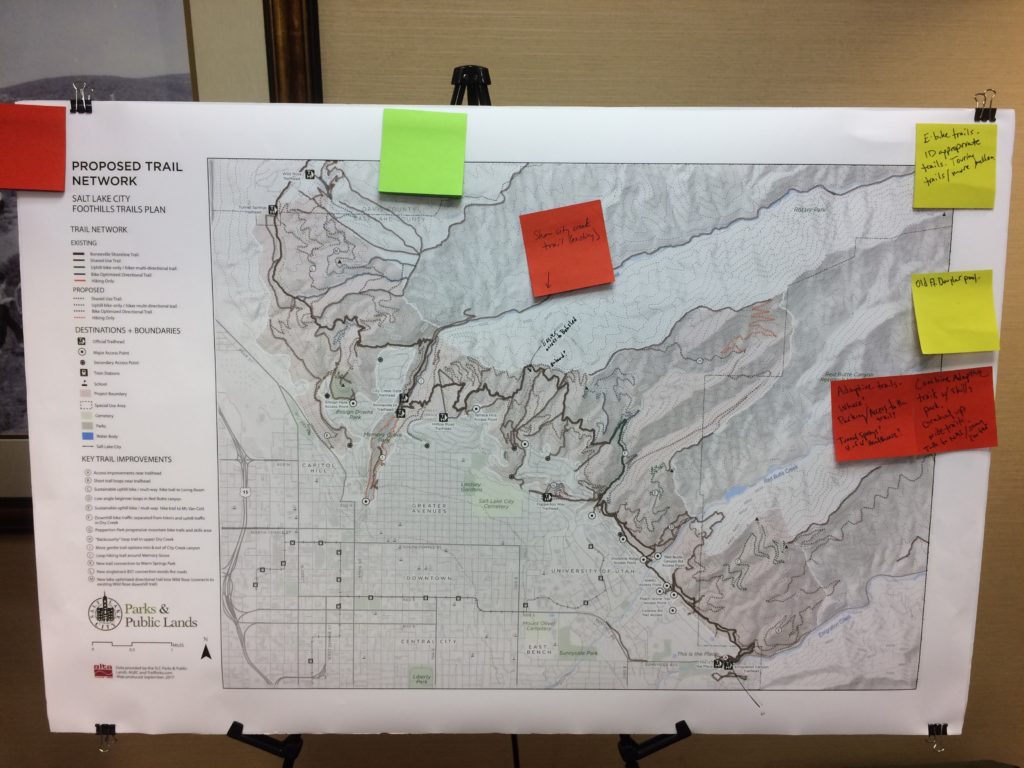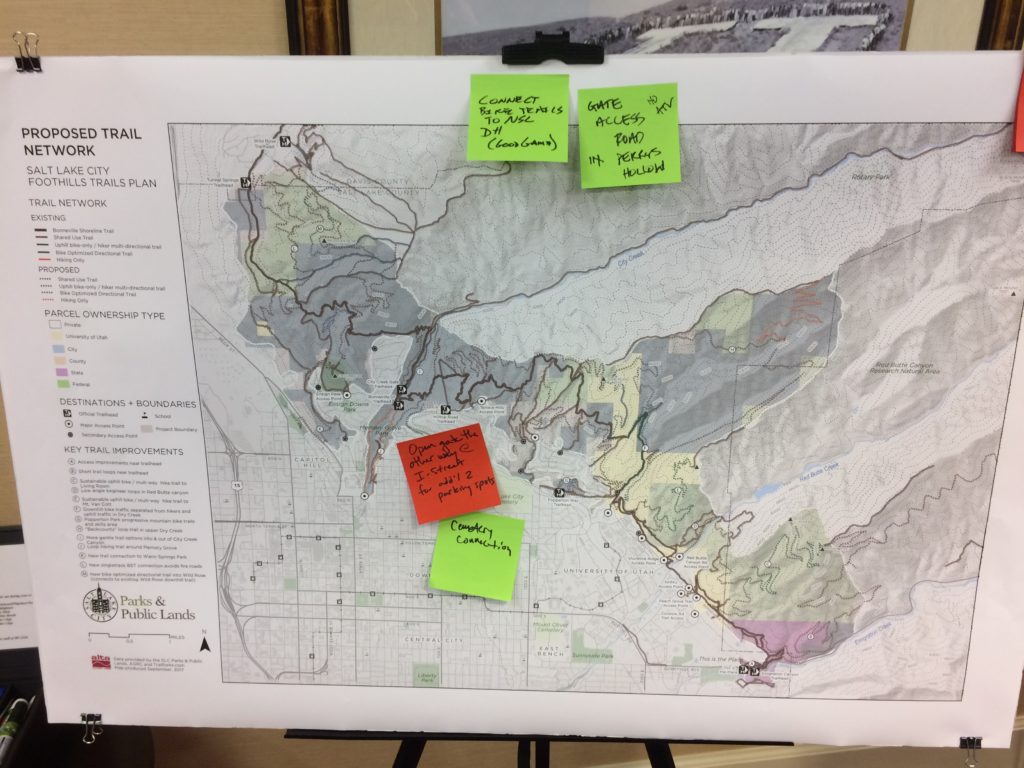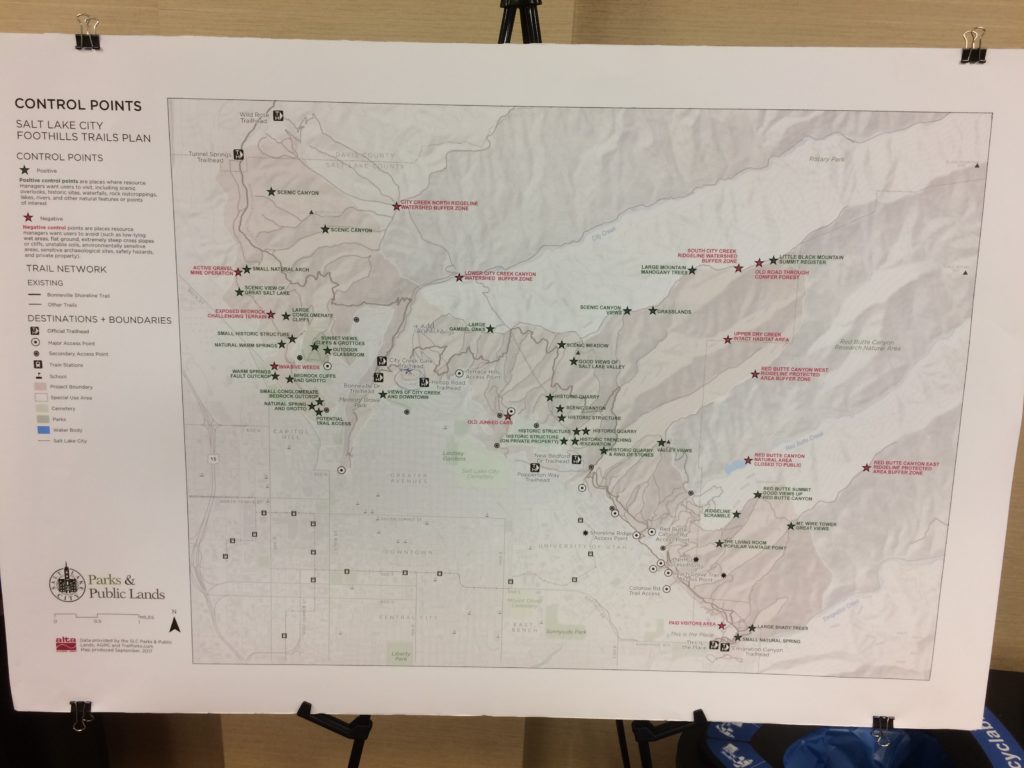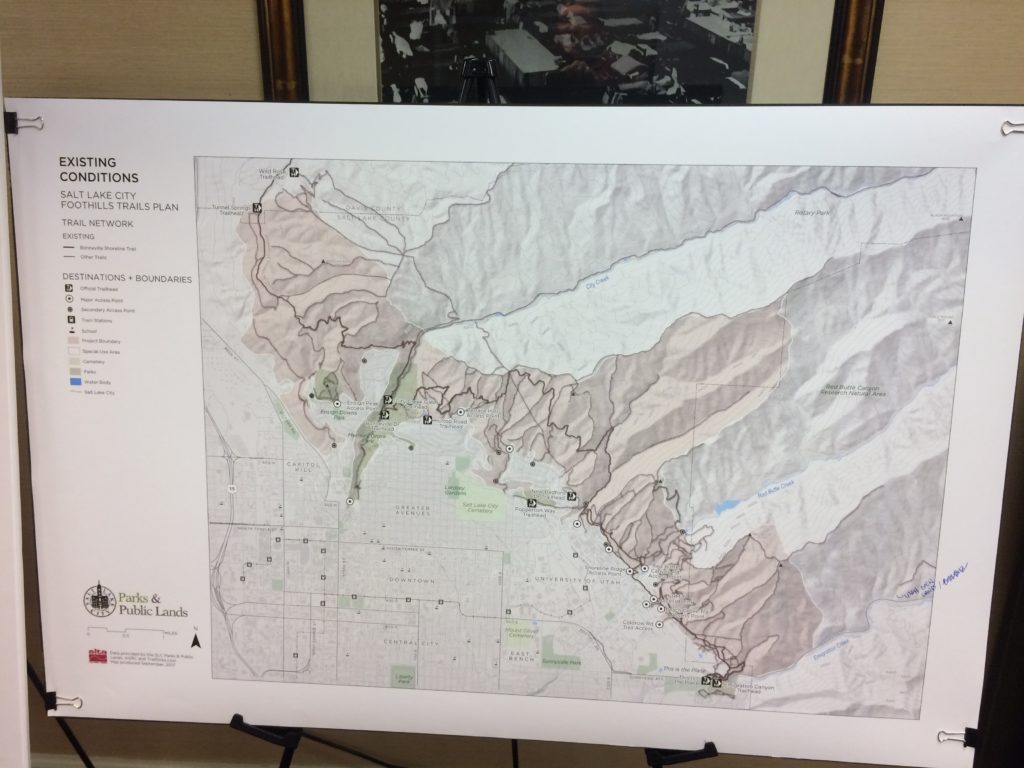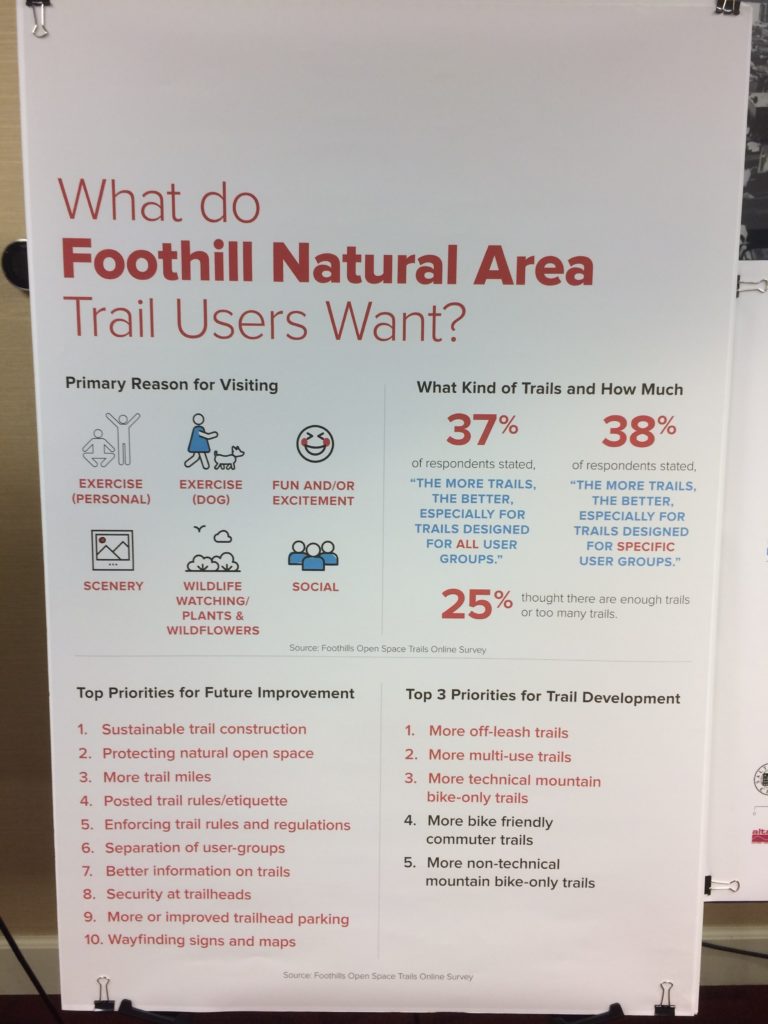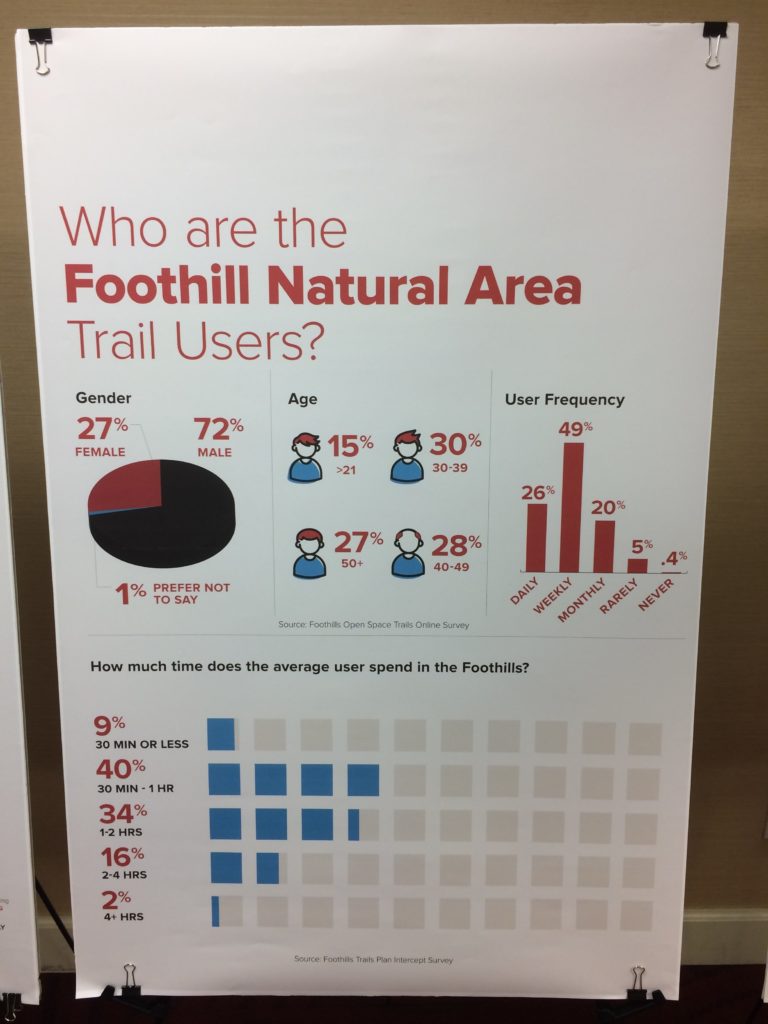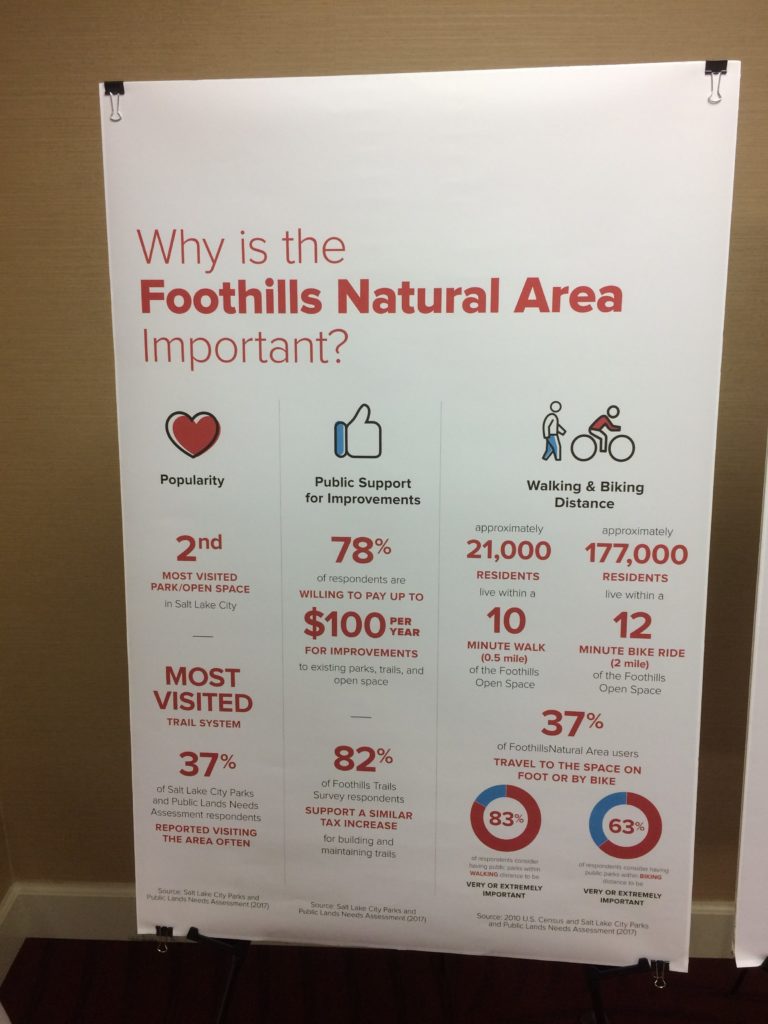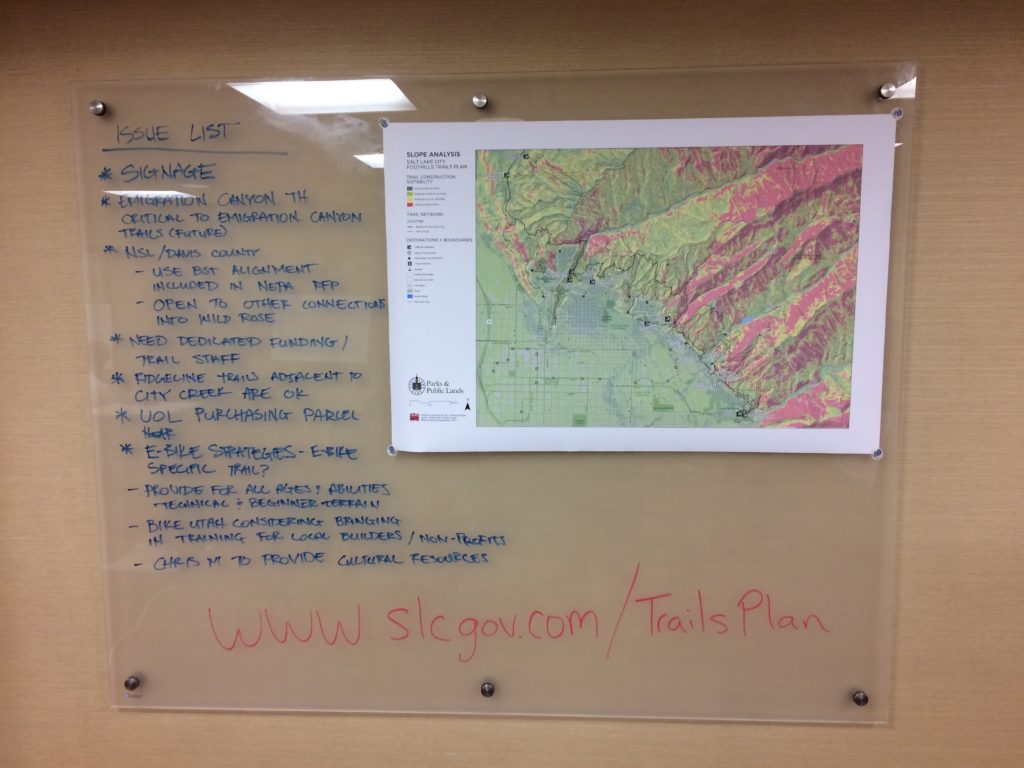30 Miles of New Trails in Salt Lake City? City Embarks on Planning Process
Provide Feedback on SLC Trails Click Here
November 12, 2017 – Salt Lake City, Utah – Salt Lake City is getting ready to move forward with a new Foothills Trails Plan that includes 30 miles of new, mostly mountain bike accessible, trails in the area from the North Salt Lake/Salt Lake City border to Emigration Canyon. The planning process is still in the preliminary stages. A survey has been taken of Salt Lake City residents, initial stakeholder meetings have taken place, and a very preliminary draft of the new trails has been created.
“SLC’s Trails & Natural Lands Program will be working over the next year to create a trail system plan for the City’s north and central foothills. The primary objectives of the foothill trail plan are: (1) to provide detailed layout, design and management recommendations for a comprehensive non-motorized foothill recreational trail system that is safe, enjoyable, accessible, connected, and sustainable; and (2) to provide information to guide strategic implementation of the trail system over a 10-year time horizon. The Plan area is bounded (very approximately) by the Davis County Line on the north, by Emigration Canyon on the south, by protected watershed lands and natural areas to the east, and by developed residential neighborhoods to the west. This spring, Salt Lake City will be soliciting competitive bids for a consultant to assist with the plan effort and will be conducting public outreach through a variety of forums,” reads a statement from Salt Lake City Open Space.
The area in consideration is from the North Salt Lake border to Emigration Canyon and the Hogle Zoo area, in Salt Lake City proper (as opposed to the broader Salt Lake Valley). The new potential trails include hiking only trails, uphill bike/hiker multi-directional trails, and bike optimized directional trails. Salt Lake City is looking to build the trails over the next 10 years, and would use funding from the Open Space Trust. It’s not clear from the trails website what trust they are referring to, but it’s likely part of the Open Space Lands Program. It’s not clear yet if developer impact fees will go to the trails, but they are a potential funding source, and one that Salt Lake City has not used to their full capacity. Many of the new trails would be located in the area near the Davis County-North Salt Lake / Salt Lake City border. Alta Planning and Design, a leading bicycle and trail oriented planning firm, is a key consultant on the project.
Salt Lake City resident trail users were enthusiastic in their support of more trails in the Foothills in the recent Open Space Trails Survey. Hiking is the primary current use of the Foothill trails, followed by recreational Mountain Biking, Dog Walking, Trail Running, and MTB Freeride, with a few horseback users. Almost 75% of respondents wanted to see more trails in the Foothills.
A photo gallery from the recent workshop is below. Public open houses and opportunities to comment will be coming up soon.
For more information, and to stay current on public comment opportunities, visit http://slcgov.com/TrailsPlan
Commentary:
Cycling Utah is ecstatic at the possibility of more trails of all types in the foothills above Salt Lake City. The Trails Plan is a long needed, and incredible step forward for Salt Lake City. We don’t have comments on any of the particular trails at this time, but would very much like to see the creation of a Salt Lake Cycle Park (similar to the Draper Cycle Park) as part of the overall plan. This could be in the area above the zoo, for example. See our document, A Proposal for a Salt Lake City Recreational Cycling Plan for more ideas.
It will be important for all residents and trail users that trail conflicts are minimized, both with biking and hiking specific trails such as those that the plan proposes, and education, signage, and trail head information at appropriate locations. Salt Lake City’s great, but limited trail system sees heavy use, and proper design and education will be key to enjoyment of the trails for all for years to come.
Additionally, we encourage the Mayor and the Salt Lake City Council to aggressively utilize developer impact fees to create new recreation opportunities of all types, including the trails plan. Salt Lake City has done an abysmal job of using these fees, often returning them to the developer. Salt Lake City had a moratorium on the fees for a year in 2015 to reboot the system, but that has since expired, and there’s little evidence that things have improved.
The trail system will require ongoing maintenance and support. Some of this could come from working with the three current trails groups in Salt Lake City: The Salt Lake Valley Trails Society, Trails Utah, and the Bonneville Shoreline Trails Committee. Those groups should consider the formation of a foundation approach, similar to that of the highly successful Mountain Trails Foundation of Summit County. Note, that Summit County benefits from the resort sales tax, something Salt Lake City does not receive, so the funding of this may be at a lesser level, or need a different funding stream.
